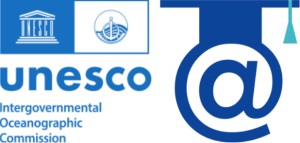Starting from September 22nd, the Blue-Cloud 2026 Training Academy is enriched with a set of 4 hour courses designed to empower ocean scientists by providing a comprehensive understanding and practical skills in using the Virtual Laboratories (VLabs) running in the Blue-Cloud Virtual Research Environment (VRE). Thanks to the project collaboration with the UNESCO/IOC Project Office for IODE, the courses are available on the IOC OceanTeacher Global Academy, a comprehensive internet-based training platform that supports classroom training, blended training, and online (distance) learning.
About OTGA
 The OceanTeacher Global Academy (OTGA) is a global network of Regional and Specialised Training Centres (RTCs & STCs) to deliver customised training for ocean experts and professionals to increase national and regional capacity in coastal and marine sciences, services and management. OTGA aims to build equitable capacity related to ocean research, observations and services in all IOC Member States by delivering training courses on a range of topics addressing the priority areas of the UN Decade of Ocean Science for Sustainable Development and the 2030 Agenda and its SDGs as well as supporting the implementation of the IOC Capacity Development Strategy.
The OceanTeacher Global Academy (OTGA) is a global network of Regional and Specialised Training Centres (RTCs & STCs) to deliver customised training for ocean experts and professionals to increase national and regional capacity in coastal and marine sciences, services and management. OTGA aims to build equitable capacity related to ocean research, observations and services in all IOC Member States by delivering training courses on a range of topics addressing the priority areas of the UN Decade of Ocean Science for Sustainable Development and the 2030 Agenda and its SDGs as well as supporting the implementation of the IOC Capacity Development Strategy.
Blue-Cloud OTGA courses
Three courses are currently available, offering video lessons and supporting material organised in different modules, according to the topic. The estimated time to complete each self-paced course is approximately 4 hours. Content and structure of each course were prepared by Blue-Cloud 2026 partners University of Liège, Flanders Marine Institute (VLIZ), National Institute of Oceanography and Applied Geophysics (OGS) of Italy, Institut de Recherche pour le Développement (IRD) of France, and Foundation for Research and Technology-Hellas - Institute of Computer Science and CMCC Foundation Euro-Mediterranean Center on Climate Change.
The courses contain a set of multiple-question automated assessments to evaluate attendees' learning. Participants will be required to complete a pre and post self-assessment related to the course content, and be requested to fill out a feedback survey at the end of the course. This will also provide valuable feedback for course teachers and organisers to enhance future training sessions.
| Course: How to use a Virtual Laboratory on Coastal Ocean Currents from Observations |
|---|
|
In this course, participants will learn how to use a multi-source approach framework to study and reconstruct surface currents through a variational inverse method: Data-Interpolating Variational Analysis in n dimensions (DIVAnd). By accessing various tools for coastal ocean dynamics research, participants will be able to use variational interpolation techniques to reconstruct surface currents and understand application in relevant scenarios, such as oil spill modeling. Through hands-on experience with the Data-Interpolating Variational Analysis in n dimensions (DIVAnd) framework, participants will learn to integrate and analyze multi-source observational datasets to reconstruct and interpret surface ocean current patterns. |
| Course: How to use a Virtual Laboratory on Carbon Plankton Dynamics |
|---|
|
Participants will learn how to explore carbon plankton data, patterns, and processes relevant to marine ecology using a virtual environment. Knowing that the carbon pump in marine ecosystems operates as a key mechanism for carbon dynamics, learning how to use a virtual carbon plankton model can provide support to enhance knowledge in marine life dynamics, as well as perform science-based decision-making. This course uses datasets and scenarios of the Belgian Part of the North Sea and the Gulf of Trieste to demonstrate the capabilities of the models, which can be applied and adapted for other regions and conditions. By accessing various digital tools, you will be able to utilize models to study carbon plankton and apply them to make decisions related to the carbon pump mechanism based on data products and modelling outputs. |
| Course: Navigating the Global Fisheries Atlas Virtual Laboratory: Tools and Techniques |
|---|
|
During this course, you will explore the benefits of standardized, FAIR fisheries data via a Virtual Laboratory (VLab). You will also get familiar with virtual facilities, either through graphic user interfaces (GUIs) or through programmatic access (APIs), and learn how to access web mapping products to browse the Global Record of Stocks and Fisheries (GRSF) and datasets describing Tuna Atlas fisheries globally. The course also provides methods to reproduce, update, and customize the systems for other use cases. The aim of this course is to equip ocean scientists with the knowledge and skills to effectively navigate, utilize, and customize the Global Fisheries Atlas Virtual Lab for accessing, analyzing, and contributing to global fisheries data and research. |
The courses are available until 31 July 2026 and are all free of charge. Please visit the links above for all the information to enroll on these courses